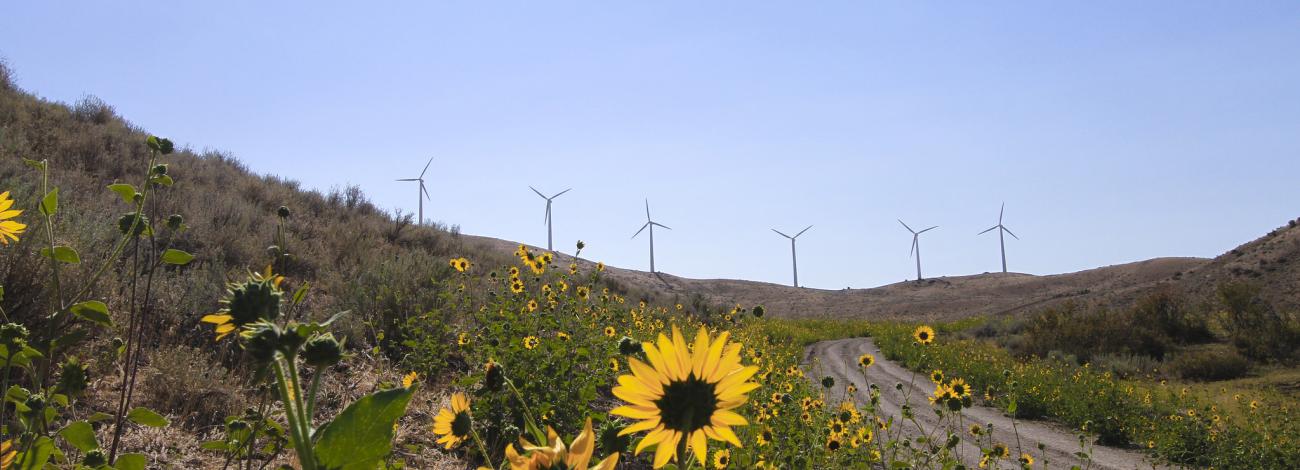
Climate Change
Conserving and protecting our public lands
Along with our partners, the BLM has a substantial role in reducing the climate threat on public lands across the United States. We are well-equipped with a strong record on renewable energy and conservation, backed by the deep knowledge and expertise of our land management scientists. For 75 years, the BLM has evolved to meet the needs of the nation, and we will continue to do so, to maximize opportunities for conservation, recreation and commercial uses on public lands.
The American people expect active and responsible management that is informed by science and public engagement. The BLM has worked diligently to meet that expectation. We rely on the advancement of science and data of the past seven decades to create best practices and methodologies of land management to better encompass conservation and appreciation of all facets of the land. As the premiere land management agency, the BLM – along with partners in science, conservation, recreation, equity, Tribal government and industry – remains committed to this mission.
Like all the bureaus and agencies in the Department of the Interior, the BLM is examining how the United States can increase environmental protections, and honor our nation-to-nation relationship with Tribes in the stewardship of public lands.
BLM employees and volunteers have vast experience in these areas, all driven by the mandates under the Federal Land Policy and Management Act and National Environmental Policy Act, including robust public involvement as part of the decision-making process.
- Renewable Energy
-
The BLM works hard, and in coordination with experts, to expand development of renewable energy sources such as wind, solar and geothermal where appropriate on public lands. Additionally, the Bureau’s goal is to ensure that its energy portfolio serves the public interest and helps restore balance on America’s public lands for the benefit current and future generations.
- Conservation
-
In alignment with the Biden Administration’s Executive Order on Tackling the Climate at Home and Abroad, the BLM is committed to conserving 30 percent each of America’s lands and waters by the year 2030. Local, state, private and Tribal-led nature conservation and restoration efforts that are already underway across America will be critical to ensuring this important goal is met.
This conservation effort is recommended by scientists, in order to safeguard every community’s health, food supply, biodiversity and prosperity. Protecting lands and waters will slow extinction rates and help leverage natural climate solutions to combat climate change.
- Engagement
-
The BLM recognizes and acknowledges that the impact of fossil fuel development is an important part of the climate change discussion. According to the U.S. Geological Survey, fossil fuel extraction on public lands accounts for nearly a quarter of all U.S. greenhouse gas emissions. To gain a better understanding of how the BLM’s federal oil and gas program can better serve the public, in March, the Department held a public forum in which panel members received expert testimony and engaged in a substantive dialogue with subject matter experts, community members and Tribal leaders. The Department commissioned a comprehensive review of the leasing and permitting programs and continues to gather public input on how to improve these programs.
In addition, BLM is committed to putting a new generation of Americans to work conserving and restoring public lands and waters through a Civilian Climate Corps. The Corps will make a significant impact by increasing reforestation, increasing carbon sequestration in the agricultural sector, protecting biodiversity, improving access to recreation, and addressing the changing climate.
- Commitment
-
Healthy public lands produce vital natural resources for energy, food, water and shelter. As places of solitude and beauty, these lands provide invaluable opportunities for recreation, conservation and renewal. Public lands also provide critical wildlife habitat for thousands of species. The multiple-use mission for conservation, recreation and commercial use of BLM land is directly threatened by climate change. Everyone – whether in urban, rural or Tribal communities – is affected by the heavy burdens that accompany extreme storms, wildfires, droughts and floods that are scientifically proven to be made worse by climate change.
The BLM recognizes its important historic role in overseeing culturally important lands and is committed to working with diverse stakeholders to properly manage cultural resources and support neighboring communities. Whether through energy policy, conservation projects, or restoring balance to public lands, animal and waters, the BLM is working diligently, through science-based and evidence-based decisions, to address the effects of climate change.
